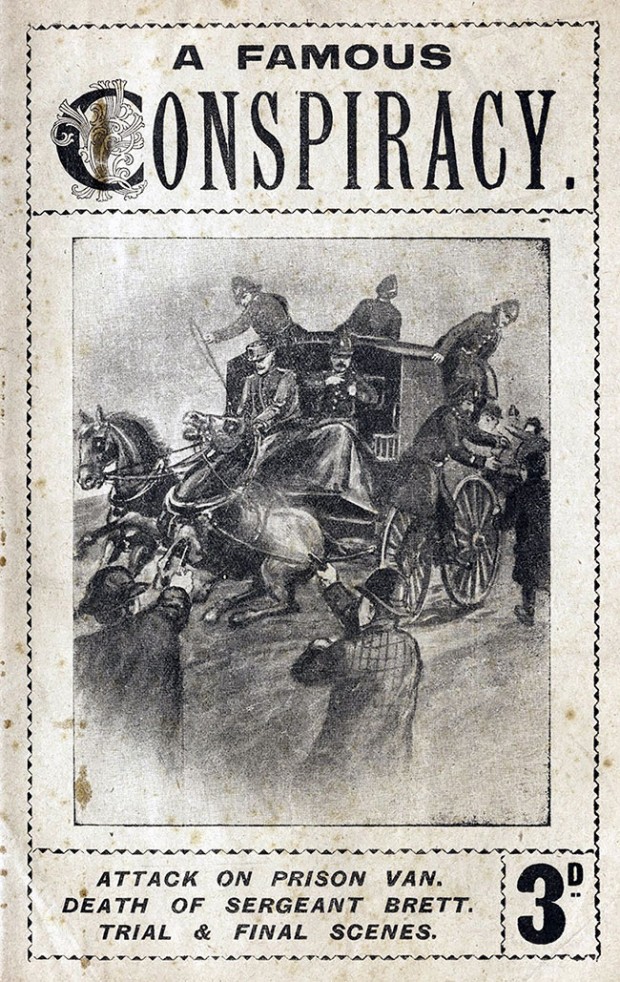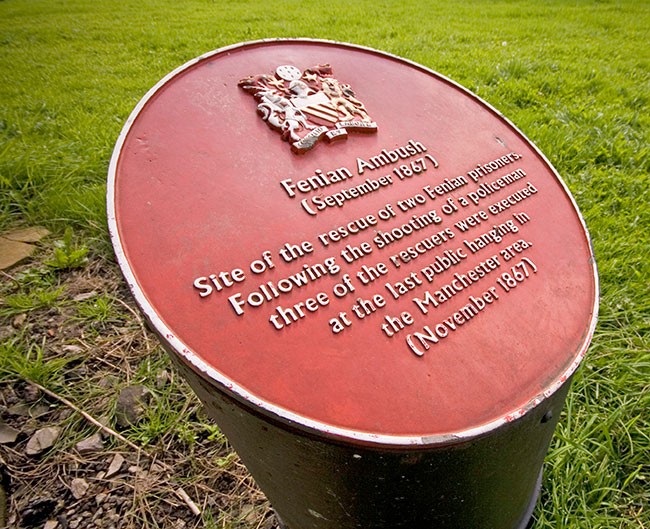4 September 2017 Edition
The Smashing of the Van – 150th anniversary
Remembering the Past

THOMAS KELLY was a native of County Galway who emigrated to the United States, joined the Irish nationalist Emmet Monument Association, worked as a printer, and enlisted in the Union Army at the start of the American Civil War. He rose to the rank of colonel and after the war became involved in the Fenian movement.
The founders of Fenianism, James Stephens in Ireland and John O’Mahony in the United States, met increasing dissatisfaction with their leadership. In 1866, Stephens was replaced by Colonel Kelly as head of the Irish Republican Brotherhood. He prepared plans for what turned out to be the ill-fated Rising of March 1867. He was one of the signatories of the Proclamation issued by the IRB which was a progressive precursor to the 1916 Proclamation.
Kelly evaded capture after the Rising and escaped to England. On 11 September 1867, the police in Manchester apprehended the acting Fenian leader, Colonel Thomas Kelly, and his associate, Captain Timothy Deasy of Cork.
One week later, on 18 September, Kelly and Deasy were being transported in a prison van from court back to jail, The two Fenians were handcuffed and locked in separate compartments inside the police van. There was also a contingent of 12 mounted policemen to escort them.

On the journey, as the van passed under a railway arch, a Fenian rescuer darted into the middle of the road, pointed a pistol at the driver and called on him to stop. At the same time, a party of about 30 Fenians leapt over a wall at the side of the road and surrounded the van and seized the horses, one of which they shot. The police, being unarmed, offered little resistance and were soon put to flight.
After a vain attempt to burst open the van with hatchets, sledgehammers and crowbars, the rescuers called upon Police Sergeant Brett, who was inside the van with the prisoners, to open the door. Sergeant Brett refused and thereupon one of the rescuers, a Dublin Fenian called Peter Rice, placed his revolver at the keyhole of the van and fired. By pure chance at that moment, Sergeant Brett had put his eye to the keyhole to see what was going on outside; the bullet passed through his eye and killed him.
The door was opened when a female prisoner inside removed the keys from Brett’s belt and passed them through a ventilation slit to the men outside.
Colonel Kelly and Captain Deasy escaped to America to continue their fight for Ireland’s independence.
Within a month of the rescue of Kelly and Deasy, five men were placed on trial in the courthouse at Manchester for the murder of Sergeant Brett. All of them were convicted. Although none of the five had fired the shot that had killed Brett, four of them had taken an active part in the rescue that led to his death.
After the trial, amid much popular speculation over the justice of the sentences passed, authorities pardoned one of the prisoners and reprieved another. But, on 23 November 1867, the other three men – William Philip Allen, Michael Larkin, and Michael O’Brien – were executed at Salford jail.
• This is based on an article by the late historian and An Phoblacht columnist Shane Mac Thomáis. In our November issue we will tell the story of the Manchester Martyrs on their 150th anniversary.




